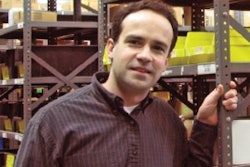
The report, "Energy Vision 2010: Towards a More Energy Efficient World," says that energy efficiency represents a critically important "energy source." Of all options available to meet growing demand, efficiency can quickly contribute the most energy "supply" while reducing costs and greenhouse gas emissions and increasing energy security, the report finds.
Energy Vision 2010 includes perspectives from high-level representatives of industry, government, non-governmental organizations and academia. Contributors include Steven Chu, U.S. secretary of energy; Masayuki Naoshima, minister of economy, trade and industry for Japan; Rex Tillerson, CEO and chairman at Exxon Mobil Corporation; Andrew Liveris, Dow Chemical Company CEO and chairman; and Kateri Callahan, president of Alliance to Save Energy.
The report finds that, despite its crucial role in the world's energy strategies, energy efficiency is often misunderstood and is in need of a "rebranding" to match up with the reality of its potential.
"Efficiency is often incorrectly associated with sacrifice," said Daniel Yergin, IHS CERA chairman and Pulitzer Prize-winning author of The Prize: The Epic Quest for Oil, Money & Power
The relative intangibility of energy efficiency can also present a challenge to a greater understanding of its potential. Companies and individuals tend to invest in assets and products that they can see, feel and touch. Governments tend to support programs that generate jobs and create technologies for export. Energy efficiency is not a "thing," but a process and a way of thinking.
The "efficiency gap" is the difference between available cost-effective efficiency options and those that are actually implemented. Closing the gap requires an understanding of how consumer and businesses make decisions about energy efficiency.
Energy efficiency projects must be "investment grade" — meaning that the energy saved covers the cost of the project and provides a competitive rate of return — if they are to attract investment. Capital availability also plays a major factor, the report finds. Even if an efficiency investment is expected to produce a high rate of return, the buyer may not be able to afford the up-front cost. Risk tolerance is another factor. Variation in energy prices and the unpredictability of future prices add uncertainty to the returns from energy efficiency investments.
Consumer behavior is also a crucial to understanding the efficiency gap, the report points out. "Consumers do not always have the information that they need to make informed decisions about investment-grade efficiency opportunities," said Roberto Bocca, senior director and head of energy at the World Economic Forum. "Consumer inertia — the preference for the status quo and familiar technologies — can also tilt consumers against energy efficient choices."
Innovation will also continue to play a key role in energy efficiency. The report cites the ongoing revolution in lighting technology — from incandescent to compact fluorescent bulbs to LEDs — as one clear example. Although breakthrough technologies capture the most attention, continuous improvement to existing technologies also plays a substantial role, the report says.
"Continuous, incremental efficiency improvements add up to significant improvements," says Samantha Gross, director with IHS CERA. "The average refrigerator in the United States today uses only one-quarter of the energy that it did in 1975, despite being 20 percent larger in size."
The report concludes that knowledge about the nature of investment grade energy efficiency, consumer behavior and technological innovation allows companies and policymakers to create the distinctive "infrastructure" that is essential to reaching energy efficiency goals.
The full report is available for free here (registration required).












